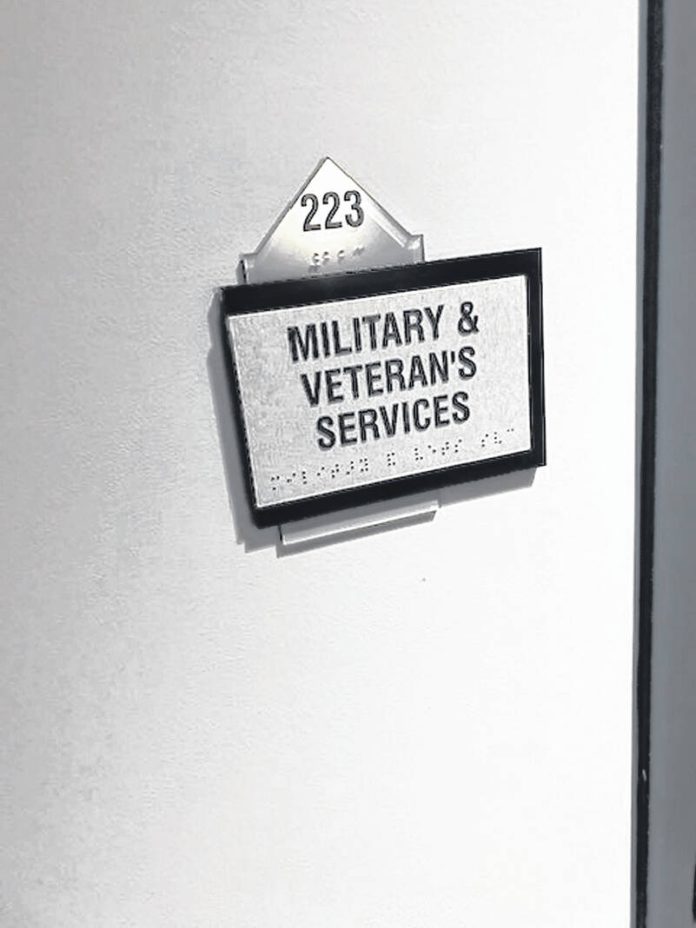When it comes to signs, in trying to determine when they were first used, you might want to recall the 45 RPM by the Hollywood Argyles that came out in 1960 entitled “Ally Oop” because sign usage goes all the way back to the Stone Age. That was when Mr. Oop and his mates began drawing symbols on cave walls to advertise the products they had that they were willing to barter.
Nowadays, it’s hard to imagine a world without signage. They border the roads we travel and abound in the buildings we enter. During my travels, there are some areas where there’s a paucity of outdoor signage. I’ve driven through the West Texas Plains from South Padre Island to Alpine with little signage. I’ve also driven extensively through Wyoming and the Dakotas and have gone miles and miles without seeing a single sign except for an occasional Wall Drugs billboard.
However, in our Midwestern environs, signs of all sorts abound, and during my daily travels for labor and for leisure, I see many. There’s a real difference between words spoken and words in print.
Words spoken, unless they contain egregious grammatical faux pas of the “I seen/ I done” variety, are easily forgotten once spoken. However, words in print have a permanence to them, which is why what goes on a sign needs to be correct.
But the more I look around, the more I see signs that have become the landing spot for mistakes in spelling, punctuation and sometimes even common sense. The trend seems to have become more prominent since we’ve rolled into the 21st century.
Back in 2000, I was excited to visit another new baseball park that had just opened, Comerica Park, in Detroit, which replaced my absolute favorite baseball venue of all time, Tiger Stadium, where my father took me to my very first game back in 1960 when the park was still called Briggs Stadium.
During my pre-game touring of Comerica, I was walking around the bleacher seating behind the outfield walls. There are statues honoring the all-time great Tiger players that surround the walkway. When I got to the statue of Hank Greenberg, one of the franchise’s most prolific power hitters who played in the 1930s and ‘40s, I noticed on the plaque beneath the statue a reference to Greenberg’s runs batted in total in 1937 of 183, which the plaque said was just one short of Lou Gehrig’s American League record.
However, instead of “Gehrig,” whoever cast the plaque spelled the great first baseman’s name “Gehring”! Of course, I had to point this out to one of the ushers standing nearby. At first, he didn’t believe me at until I walked him over to show him the error, at which point he dropped his head and told me he’d alert the team’s front office of the mistake and the need for a new plaque to be struck.
I’ve seen many other mistakes, such as signs on the back walls of manufacturing facilities that read, “Shipping and Recieving,” instead of “Shipping and Receiving.” Last week while in a building in Columbus working, I saw a sign on a door leading to the truck docks that read, “Authorized Personell Only,” in a case of the wrong consonant was doubled. Yet another I saw in a warehouse read, “Reuseable Slips,” the work of someone who must have been absent the day the teacher taught what happens when vowel-beginning suffixes are added to root words ending in silent “e’s.”
On other signs apostrophes are either missing or are on the wrong side of the “s.” One that Lady Jane and I see when riding bikes is just off the Franklin Township Greenway Trail. There, chiseled into a large stone in someone’s front yard is “The Hill’s.” Well, if there’s more than one Hill within those walls, and I know that to be true because I’ve seen a man and women working together in the yard, the rock should show the apostrophe after the “s.” In another building outside an office, I’ve also seen a sign that reads, “Military & Veteran’s Services” with that pesky apostrophe yet again on the wrong side.
Sometimes the mistakes I see on signage involve errors in logic. I have to laugh each time I see in one building one of those ubiquitous signs beside an elevator that provides a graphic image that accompanies the written admonishment to use the stairs in case of a fire.
On this particular sign, despite the fact that it’s beside an elevator on an upper floor, the graphic of the stick man is actually headed UP the stairs. While certainly not a proofreading error, there is surely a directional error!
Once upon a 1971 time, the band Five Man Electrical Band sang, “Sign, sign, everywhere a sign,” and, of course, the same can be said today. However, is it asking too much to make sure they are correctly presented?
John Grindrod is a regular columnist for The Lima News, a freelance writer and editor and the author of two books. Reach him at [email protected].







